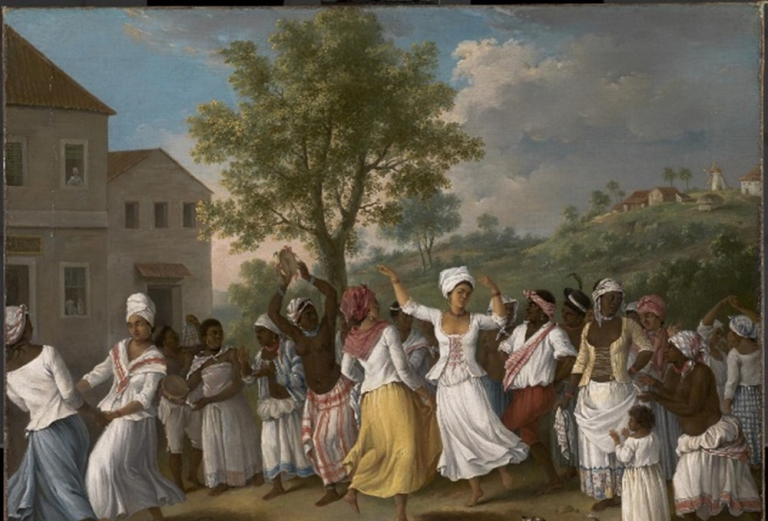Song
Throughout the American south, ‘negro spirituals’ became a vital form of folksong amongst enslaved people.
Some were also used as a form of coded communication to plan escape from slavery. As abolitionist Harriet Tubman guided Black people to freedom along the Underground Railway, she sang certain spirituals to signal it was time to escape. Coded songs contained words giving directions on how to escape also known as signal songs, or where to meet known as map songs.

African traditions in song can still be found in many Caribbean countries. For example, African songs were still in use in Trinidad up until the 1970s.
This is part of a Yoruba song about exile from family and country.
Mo gbédèrè
I have come to understand the language of strangersMo gbé àrè o
I live in exileAgbe ló láró, ló láró
(Just as) the agbe wears indigo, wears indigoÀlùkò ló kósùn, ló kósùn
(And) the aluko gathers camwood, gathers camwoodBaba, yìnbó ló kó a wá o
Father, the Europeans captured us and brought us hereOlórun okè ló ní wa o
(But) it is God above who owns usMo gbédèrè
I have come to understand the language of strangersMo gbé àrè o
From Marina Warner-Lewis, ‘Yoruba Songs of Trinidad’, London: Karnak House, 1994.
I live in exile